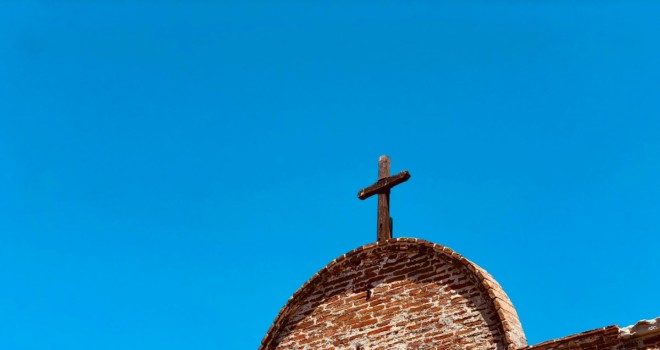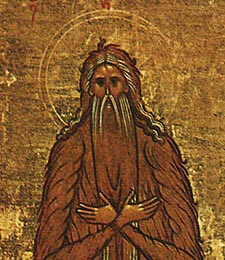On this United Nations’ International Day of the World’s Indigenous People and in light of the discovery of graves at state-sponsored, Catholic Church-run Indian Residential Schools in Canada, I would like you to meet Pablo Tac (1822-1841). He can help reconcile with the past so that the future is one filled with hope..
Since June 2020, vandalism of images of Saint Junípero Serra (1713-1784), the Spanish priest whom Pope Francis called “the evangelizer of the west in the United States”, has accelerated. Vandalism of public statues of Junípero Serra have taken place by angry mobs in San Francisco, Los Angeles, and Sacramento and desecrated on Catholic church property at Mission San Rafael (five people were arrested). The San Francisco Board of Education’s School Renaming Committee called him a “Colonizer and slaveowner” (see spreadsheet in Jan. 28 Mission Local article). No evidence was provided. No historians questioned. What is being done in Los Angeles regarding public memory at least has representatives of all stakeholders (Los Angeles Times, Apr. 18). Even elected officials in California are joining in. Assembly Bill 338 argues that the state is not big enough for acknowledging both Serra and California Indians with separate memorials. The bill calls for the Serra statue at the Capitol remain in storage and to memorialize a California Indian in its place (I recommend Pablo Tac). I guess those backing the bill forgot about Governor Newsom’s 2019 apology for the true genocide, with the backing of the state government, against California Indians. A rash of vandalism on Catholic churches in the United States occurred in the wake of the murder of George Floyd. Earlier this summer, four Catholic churches in Canada were burnt down and others vandalized. After researching Pablo Tac and starting to pray to him, I am pretty confident that he can be a bridge for all those who are burdened by hatred and division.
Pablo Tac was a Luiseño Indian. His home was Mission San Luis Rey de Francia, founded on June 12, 1798 by Serra’s predecessor Father Fermín Francisco de Lasuén, the eighteenth of the Spanish missions established in California. Soon after the Mexican period began, Pablo Tac was born and baptized on January 15, 1822. On January 17, 1832, he left San Diego with the pastor of Mission San Luis Rey, Father Peyrí, and another Luiseño boy, Agapito Amamix, for the College of San Fernando in Mexico City, where they would stay from November 12, 1832-January 15, 1834. In February 1834, the three of them departed for Rome from the port of Veracruz, the same port Saint Junípero Serra entered when he arrived in Mexico in 1749. Their ship stopped in New York, France, and Barcelona—where Father Peyrí disembarked—and after eight months of travel, the two boys finally reached Rome. On September 23, 1834, Pablo and Agapito enrolled at the College of Propaganda [today known as Urban College]. The young California native boys’ from the “new” world were meeting the “old” world.
In the only letter we have from Father Peyrí to someone in California after he left for Europe via Mexico City, is to his friend Stephen Anderson. In it he wrote, “I brought with me two Indian youths, Pablo and Agapito, whom you knew already in California. I had the good fortune of being able to place them in Rome at the College of Propaganda, where they are very contented and which I doubt not they will leave bright men, for they are very talented, and they are very much appreciated by the entire College for being from such distant countries, true Indians, and of good comportment.” Pablo must have wowed those he met.
Pablo’s writings are the earliest from a California Indian, quite a legacy since languages are lost at an alarming rate (in 2016 it was reported that 2680 languages are in danger of becoming extinct). Pablo wrote a description of life as a mission Indian (“Conversion of the San Luiseños of Alta California”, c. 1835), gave a public recitation of a poem at the Polyglot Academy (c. January 1836), in Sequoyah-esque fashion created a dictionary of the language of his people (“Prima Linguae Californiensis Rudimenta a P. Tak proposita”, c. February 1838), and wrote an account of the native peoples in Southern California (“De Californiensibus”, c. after 1838). We can clearly see in this excerpt from Pablo’s “Conversion of the San Luiseños of Alta California” that he was grateful for being introduced to the Gospel. He wrote, “O merciful God, why didst Thou leave us for many centuries, years, months, and days in utter darkness after Thou camest to the world? Blessed be Thou from this day through future centuries.” Pablo can lead one to a deeper holiness and should be recognized in the communion of saints.
Unfortunately he is little known, but once people are made aware of his story, his short life inspires. Recently the Oceanside (CA) Unified School District Board of Education voted to name a school in Pablo’s honor, beating civil rights activists Dolores Huerta and John Lewis. Also, his life inspired those who have signed the petition to nominate Pablo Tac for the cause of canonization (full disclosure, the petition at www.change.org/InvokePabloTac was started by the author).
With a population of 362,801 Native Americans, California has the largest indigenous population in the United States. The United States Conference of Catholic Bishops (USCCB), Secretariat Report on Diversity, “Native American Catholics at The New Millennium” (March 2003) states that approximately 20% (or 493,614) of all Native Americans (2,376,036) are Catholic. At that time, according to the report, an estimated 77,769 Native Catholics lived in California, Hawaii, and Nevada. Native Americans compose approximately 3.5% of all Catholics in the United States. Then there are these statistics. According to The Aspen Institute’s Center for Native American Youth, “AI/ANs attain the lowest level of education of any racial or ethnic group in the United States. . . . Native teens experience the highest rates of suicide of any population in the United States. . . . American Indian and Alaska Native communities experience rates of violent crime nearly twice as high as in the general population.” No matter the creed or race, youth need a hero like Pablo, a spiritual warrior who persevered against great odds. The Oceanside (CA) Unified School District recognized Pablo’s achievements in June 2021 by naming a school in his honor.
In June 2020, I finished walking the 800-mile California Missions Trail, the route that connects the twenty-one Catholic missions founded by Franciscan priests between 1769-1823. I learned many lessons from those who blazed the Trail before me—indigenous, Spanish, and mestizo. Of course I prayed often to Saint Junípero Serra (he traversed an estimated 24,000 miles to share the Gospel message, much of it on foot and in pain). I also prayed to Pablo Tac — California mission Indian. seminarian, and scholar.
Some Catholic organizations whose primary focus is to serve Catholic Native American communities include The American Indian Catholic Schools Network, The Bureau of Catholic Indian Missions, Catholic Extension, Tekakwitha Conference, and the USCCB– Native American Affairs. They would love to hear from you to discuss how you can learn more about their history and share your time, talent, and treasure with those they serve.













